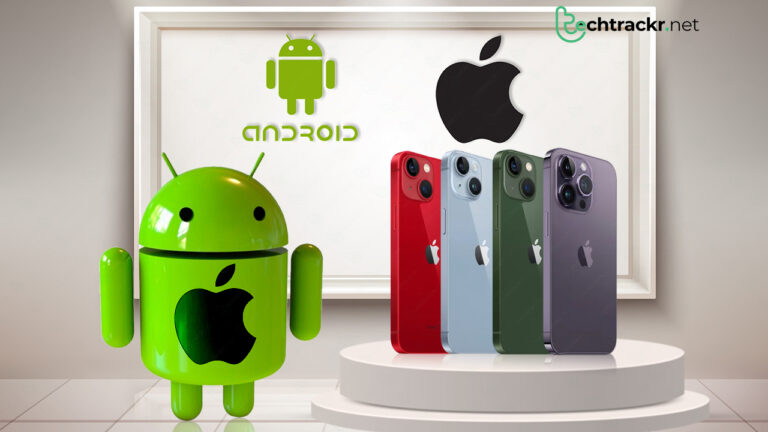
There are few things in the world more annoying than vegans, cyclists, and iPhone users. If left in a room alone vegans and cyclists might still quiet down, iPhone users will take the time to send emails about their solitude, ending it with “sent from an iPhone”.
The alleged superiority of iPhone users is known the world over but most of it comes from a mistaken sense of novelty that the piece of technology they hold is somehow the first of its kind and revolutionary. To their infinite denial, neither of those two things is true. Well, not most of the time.
As Apple readies on September 12 to launch another slew of gadgets including the latest iPhone 15 family of phones, proud iPhone users and owners of those pristine blue bubbles should know all that is going to follow in this article, written by a proud iPhone user who is not living in denial.
When Steve Jobs took to the stage in January 2007 to announce the first iPhone, it was a truly remarkable moment in history. True to the slogan “Apple reinvents the phone”, it really did that.
The 3.5-inch marvel was the first phone with a multi-touch touchscreen, a glass display to save it from random scratches, and a metal back cover.
It all happened a year before the world saw its first Android phone in the form of the HTC Dream. It was a time when Google, which owned Android, couldn’t think of a standalone touch phone and had to incorporate a QWERTY keyboard in the HTC Dream.
As Apple continued to unveil a new phone every year, sometimes two phones, the original idea of bringing something truly revolutionary to the people was getting lost somewhere along the line. Even though Apple’s bosses continued to scream at the top of their lungs how it was doing something for the first time, the world around them knew it wasn’t so.
Here are a few things that came out of Android’s innovation and Apple was simply motivated to call them its own:
Home screen widgets
Even though Android had a late start, its open-sourced nature allows for far greater innovative ideas than Apple. Home screen widgets were one such idea that allowed users access to several functionalities without needing to launch an app.
This simple feature came to iPhones with iOS 14 in 2020, more than 10 years after Android 1.5 in 2009.
Fingerprint sensor
Today one cannot think of a phone without a fingerprint sensor, but it wasn’t until 2011 when Motorola added the extra layer of protection in Atrix 4G.
Two years later, Apple called it “Touch ID” and introduced it in the iPhone 5S. Credit where it is due, Apple put the sensor in the home button, making it a more natural process to unlock the phone.
Water and dust resistance
Motorola has been the true pioneer in every sense when it comes to introducing new technologies to the market. In 2010, the company made its smartphones water and dust-resistant with Motorola Defy, which came with an IP67 rating.
The phone could withstand dust and be submerged up to 1 meter in water for 30 minutes. Apple, on the other hand, added the feature in 2016 with iPhone 7.
Multi-camera setup
Android already had an army of smartphones boasting of multi rear cameras since as early as 2011 with the LG G5 and HTC One M8 when Apple managed to put more than one camera in its phones in 2016.
The iPhone 7 Plus was the first such device in the Apple family that had a dual-camera setup on the back.
Fast charging and wireless charging
While Apple has struggled with 15W charging speeds and called it fast charging, Android phones boast of some unreal numbers like 65W, 100W, and even 250W fast charging.
Wireless charging also came to Android first with Samsung playing with the technology since as early as 2011. Apple introduced wireless charging with the iPhone X and iPhone 8 series in 2017.
The list is long when Apple peeked into Android’s notebook. Along the way, it even picked something that made the Cupertino company lose the dream set by Steve Jobs, who was an advocate of small iPhones.
After Jobs’ death in 2011, the size of the iPhone continued growing, which used to be an Android thing to make tall phones.
In the name of original innovation, Apple decided to take the charger out of the box and called it environment friendly. It was ridiculous how ardent Apple fans failed to see how the company had conned them by forcing them to buy the adapter separately.
Apple’s “innovation” gave others the idea that it was possible to take users’ money even after selling them the phone.
Apple was “innovative” in ditching the 3.5mm jack. Nobody had asked for it and once the company did it, it gave everybody else a licence to chuck it too.
One can call it Apple’s audacity in creating the demand for something that nobody thought they wanted, be it the absence of a physical keyboard in the first iPhone, or removal of the 3.5mm audio jack, or more controversially, taking the charging adapter from the box.
There are flaws in iPhones as big as the camera module in some of the most ridiculous-looking Android phones, but it does not take away its popularity. For good reasons, it has continued to deliver smartphones to make anyone jealous or simply envious.
But, for every good iPhone, there is a better Android phone out there. Just saying.
